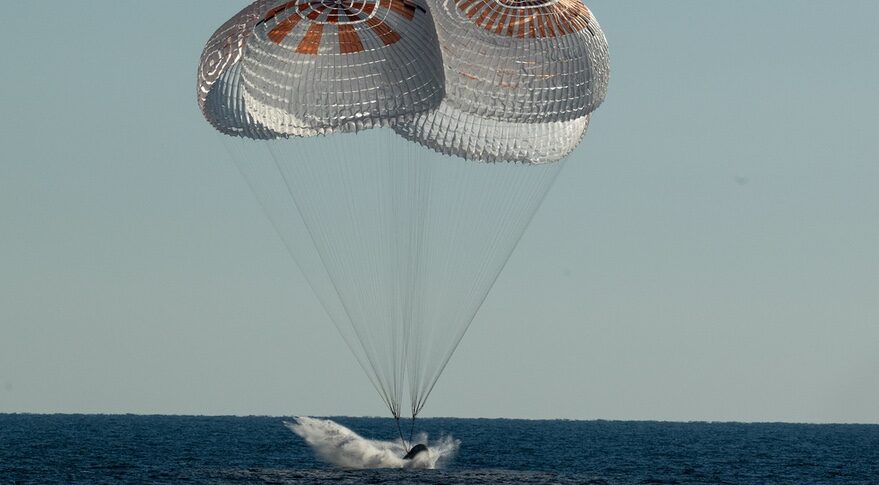
Crew-4 returns to Earth (Image Credit: Space News)
WASHINGTON — SpaceX completed its fourth operational commercial crew mission to the International Space Station Oct. 14 with the safe return of a Crew Dragon spacecraft with four American and European astronauts on board.
The Crew Dragon spacecraft Freedom splashed down in the Atlantic Ocean east of Jacksonville, Florida, at 4:55 p.m. Eastern, less than five hours after undocking from the ISS, a record for fastest return of a Crew Dragon from the ISS. On board the spacecraft were NASA astronauts Bob Hines, Kjell Lindgren and Jessica Watkins and European Space Agency astronaut Samantha Cristoforetti.
The Crew Dragon’s return to Earth was “very nominal,” said Steve Stich, NASA commercial crew program manager, in a call with reporters after splashdown, with all four astronauts on good shape. “The entire team did a great job.”
NASA had planned for the Crew Dragon to depart the station on Oct. 12 for an Oct. 13 splashdown, but postponed that departure as well as one on the morning of Oct. 13 because of weather at splashdown locations off the Atlantic and Gulf coasts of Florida. Weather conditions improved, allowing for Crew Dragon to undock at 12:05 p.m. Eastern Oct. 14 for a brief trip back to Earth.
“Weather was a big challenge this week. It’s probably the first time we’ve experienced the dealing with cold fronts” for a Crew Dragon splashdown, said Stich. On Oct. 13, he said NASA had hoped the cold front would clear the region in time to allow a splashdown off the coast of Tallahassee, Florida, but it didn’t work out. “We just really couldn’t get comfortable with the winds at landing, so we took it down pretty close and we decided to wave off before we got through depressing the vestibule and using some of the ISS consumables.”
The splashdown marks the end of the Crew-4 mission, which started with a Falcon 9 launch from the Kennedy Space Center in the pre-dawn hours April 27, docking with the station less than 16 hours later. The four astronauts spent 170 days in space.
The Crew-4 astronauts departed the station nearly eight days after the arrival of another Crew Dragon spacecraft, Endurance, on the Crew-5 mission, delivering American, Japanese and Russian crewmembers to the station. That included Anna Kikina, the first Russian cosmonaut to fly on a commercial crew vehicle and the first to go on any U.S. spacecraft in two decades.
Crew-4 was the fourth operational, or post-certification, SpaceX commercial crew mission for NASA. In addition to those missions, SpaceX flew the Demo-2 test flight for NASA in 2020 and two private astronaut missions, Inspiration4 and Axiom Space’s Ax-1. Two more private astronaut missions, Polaris Dawn and Ax-2, are scheduled for the first half of 2023.
SpaceX will fly another crew rotation mission for NASA, Crew-6, in the spring of 2023. After that, NASA expects to alternate missions with Boeing’s CST-100 Starliner assuming that vehicle successfully completes a crewed test flight in early 2023. That would start with Starliner-1 launching in the fall of 2023.
Boeing has six crewed missions under its original Commercial Crew Transportation Capabilities (CCtCap) contract awarded in 2014. SpaceX also had six flights under its CCtCap contract, but NASA has twice extended that, adding three missions in February and five in August, bringing the total to 14. That extension, and Boeing’s contract, should be sufficient to support ISS operations through its currently planned end of life in 2030.








